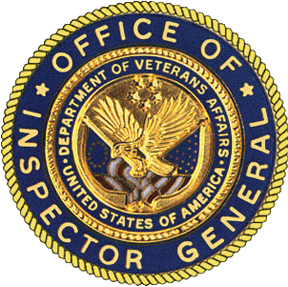Mental Health Inspection of the VA Philadelphia Healthcare System in Pennsylvania
Report Information
Summary
The OIG’s Mental Health Inspection Program (MHIP) evaluates Veterans Health Administration’s (VHA’s) continuum of mental healthcare services. This inspection focused on inpatient care delivered at the VA Philadelphia Healthcare System (facility) in Pennsylvania.
The facility met some VHA requirements for the inpatient mental health unit, such as completion of twice-yearly environment of care inspections, and had some aspects of a recovery-oriented environment. However, not all areas met VHA standards for a safe, hopeful, and healing setting. Facility leaders did not establish written processes for staff to accompany veterans on outdoor breaks.
The facility did not have an established mental health executive committee for local oversight or a plan for continued transformation to recovery-oriented services. Additionally, inpatient staff did not offer the required daily hours of interdisciplinary programming. Facility leaders did not have formal written guidance to monitor and ensure compliance with state involuntary commitment laws.
Not all electronic health records (EHRs) reviewed included documentation of a treatment plan. Most EHRs did not have evidence of required discussions with veterans on the risks and benefits of prescribed medications. Some EHRs did not have evidence of timely suicide risk screenings. Most reviewed safety plans did not address ways to make the environment safer from potentially lethal means beyond access to firearms and opioids.
Inpatient unit clinical staff were compliant with suicide prevention trainings, but nonclinical staff did not consistently complete the required training.
The Interdisciplinary Safety Inspection Team did not adhere to VHA requirements, including staff’s completion of annual environmental safety hazards training, and did not address safety hazards, including ligature risks.
The OIG issued 20 recommendations to the Facility Director, Chief of Staff, and Associate Chief of Staff for Behavioral Health. These recommendations, once addressed, may improve the quality and delivery of veteran-centered, recovery-oriented care on the inpatient mental health.
The Facility Director establishes a mental health executive council that operates in accordance with Veterans Health Administration requirements.
The Facility Director ensures development and implementation of a multi-year recovery transformation plan.
The Associate Chief of Staff for Behavioral Health ensures a minimum of four hours of recovery-oriented, interdisciplinary programming on weekdays and weekends on the inpatient mental health units.
The Facility Director ensures inpatient mental health units are in good repair and the environment reflects recovery-oriented principles.
The Facility Director ensures veterans’ privacy in restraint rooms on the inpatient mental health units.
The Associate Chief of Staff for Behavioral Health develops written guidance to ensure staff and veterans’ safety during outdoor breaks.
The Facility Director formalizes processes to monitor and track compliance with state involuntary commitment laws.
The Chief of Staff ensures the completion of comprehensive inpatient mental health treatment plans and monitors for compliance.
The Chief of Staff ensures documentation of discussions between prescribers and veterans on the risks and benefits of newly prescribed medications and monitors for compliance.
The Chief of Staff ensures mental health treatment coordinators are included in care coordination.
The Chief of Staff ensures discharge instructions for veterans include appointment locations written in easy-to-understand language.
The Chief of Staff ensures discharge instructions for veterans include the purpose for each listed medication in easy-to-understand language.
The Chief of Staff ensures discharge instructions for veterans include an explanation when both trade and generic names are used for the same medication.
The Chief of Staff ensures staff complete the Columbia-Suicide Severity Rating Scale within 24 hours before discharge and monitors for compliance.
The Chief of Staff ensures safety plans address ways to make the veteran’s environment safer from potentially lethal means and monitors for compliance.
The Facility Director ensures staff comply with timely completion of VA S.A.V.E. training requirements and monitors for compliance.
The Facility Director ensures the Interdisciplinary Safety Inspection Team adheres to Veterans Health Administration requirements, including recording meeting minutes and including all required members, and monitors for compliance.
The Facility Director implements processes to ensure Interdisciplinary Safety Inspection Team staff accurately identify and document safety hazards within the Patient Safety Assessment Tool and monitors for compliance.
The Facility Director ensures staff address identified Mental Health Environment of Care Checklist deficiencies in accordance with Veterans Health Administration guidelines and monitors for compliance.
The Facility Director ensures Interdisciplinary Safety Inspection Team members comply with Mental Health Environment of Care Checklist training requirements and monitors for compliance.
